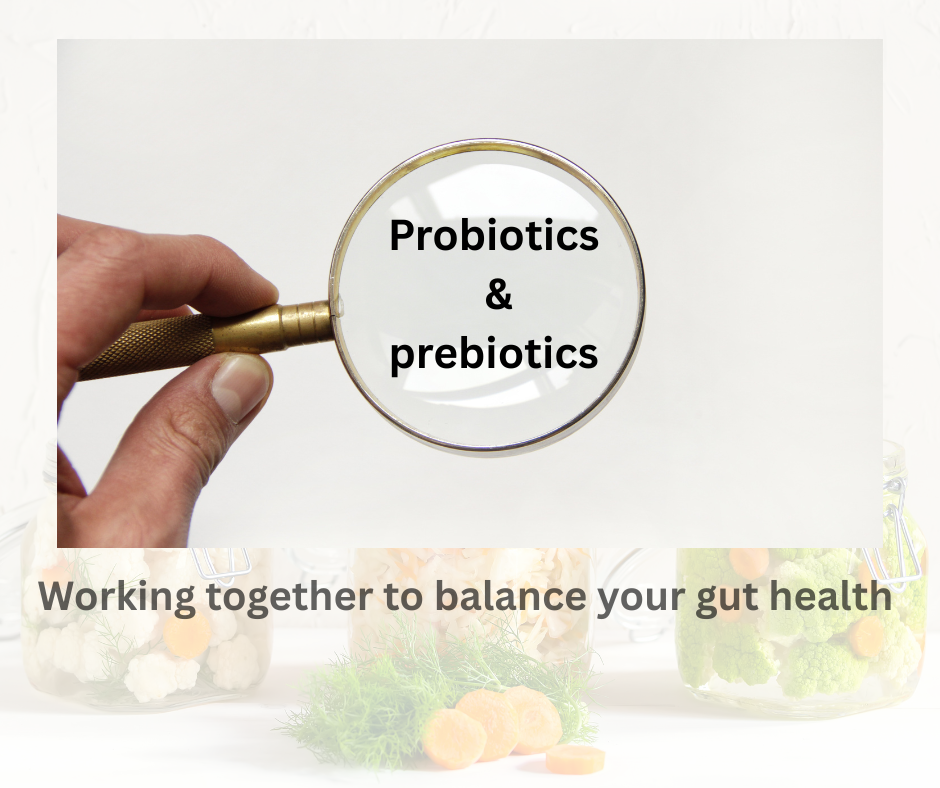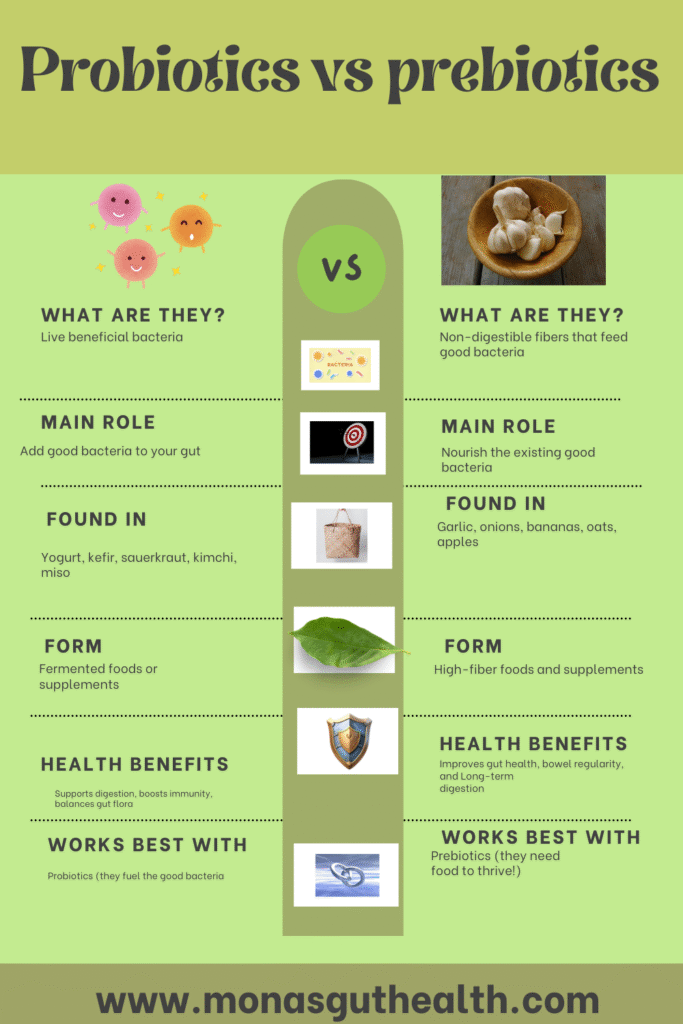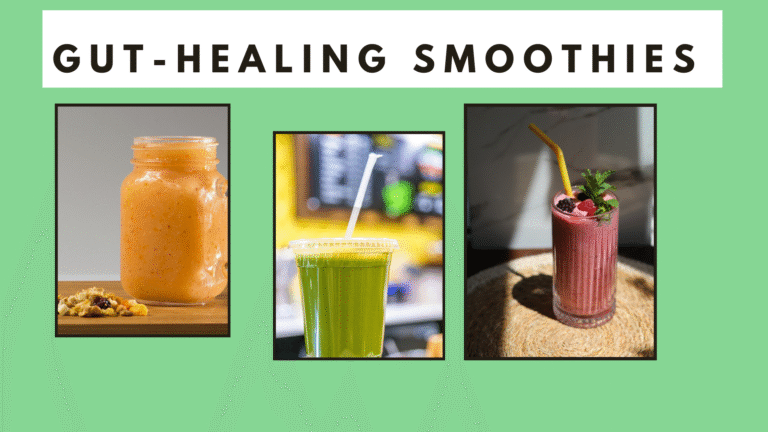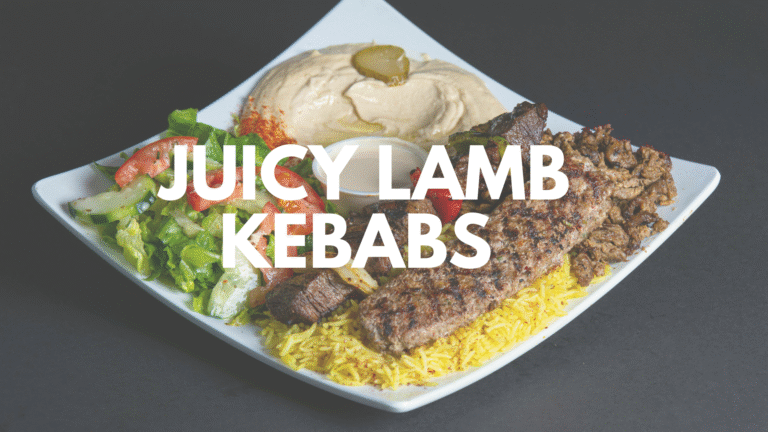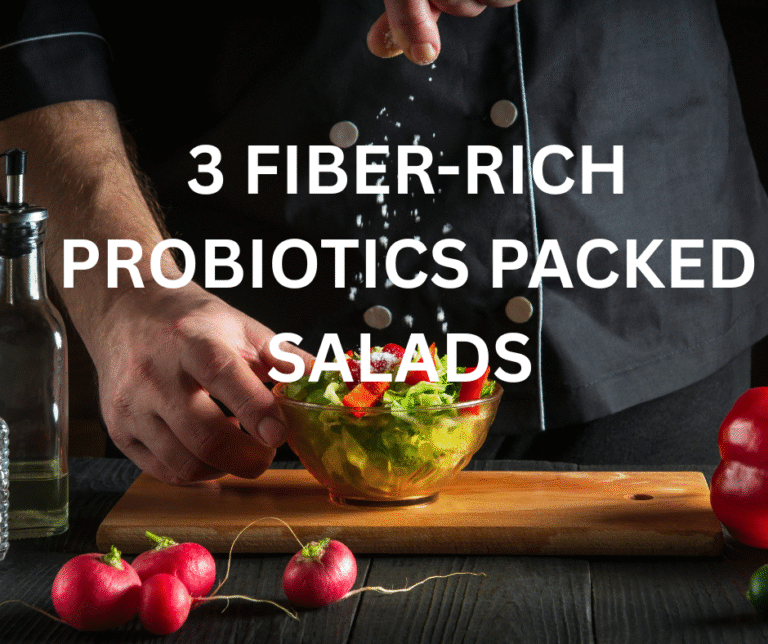Confused about prebiotics and probiotics? You’re not alone. The good news? You don’t need expensive supplements just a few smart food swaps to support your gut.
This easy visual guide breaks down the difference between the two and shows you how to use both to naturally improve digestion, immunity, and energy.
Pin this for later and keep reading for gut-friendly food lists, tips, and quick meal ideas!
In this post, you’ll learn:
- The key differences between prebiotics and probiotics
- Science-backed benefits for digestion, immunity, and mood
- Easy gut-friendly food lists and meal ideas
- Time- and budget-friendly tips
Why Your Gut Health Matters
Your gut microbiome home to trillions of bacteria impacts nearly every part of your health:
- Digestion & nutrient absorption
- Immune function: 70% of immune cells live in the gut!
- Mood & mental clarity: Via the gut-brain axis
- Skin health & inflammation control
When your gut is imbalanced, you may experience bloating, fatigue, and frequent illnesses. The fix? Feed it the right combo of probiotics (good bacteria) and prebiotics (their food).
Probiotics: The “Good Bacteria”
What they do: Introduce beneficial microbes to your gut.
Top Probiotic Foods
| Food | Key Benefit | Easy Way to Eat It |
|---|
| Yogurt | Contains live cultures (L. acidophilus) | With berries & granola |
| Kefir | More diverse strains than yogurt | Blended into smoothies |
| Sauerkraut | Rich in Lactobacillus bacteria | On avocado toast or salads |
| Kimchi | Spicy and gut-friendly bacteria | In stir-fries or rice bowls |
| Miso | Supports digestion & immunity | In soups, dressings, marinades |
Quick Tip: Choose unpasteurized, refrigerated fermented foods (heat can kill beneficial bacteria).
Prebiotics: Fertilizer for Your Gut
What they do: Feed probiotics so they can thrive.
Best Prebiotic Foods
- Garlic & onions – contain inulin, a potent prebiotic
- Green bananas – high in resistant starch
- Asparagus, oats, apples – rich in soluble fiber
- Flaxseeds & chia seeds – perfect in smoothies
Why You Need Both (Synbiotics)
Think of your gut like a garden: Probiotics = Seeds (add good bacteria)
Prebiotics = Water & Sunshine (help them grow)
Together, they can:
- Reduce bloating and improve digestion
- Strengthen immune responses
- Support mental clarity and stable energy
Science Note: A 2023 study found that combining prebiotics and probiotics (called synbiotics) was more effective for gut diversity than either alone.
5-Minute Gut-Healthy Meals
Breakfast
Greek yogurt + raspberries + flaxseeds + drizzle of honey
Lunch
Lentil soup with garlic + a side of kimchi
Dinner
Salmon + roasted asparagus + cooled quinoa (resistant starch!)
Snack Idea
Apple slices with almond butter (fiber + healthy fats)
Common Questions
Can I take probiotics and prebiotics together?
Yes! This combo (called synbiotics) helps probiotics colonize better. Example: Yogurt (probiotic) + banana (prebiotic).
2. How long until I see results?
Some people feel better in days, but lasting changes take 4–6 weeks of consistent intake.
3. Are supplements necessary?
Not usually whole foods work well. If you’re recovering from antibiotics or have specific health issues, consult a healthcare provider.
Final Tips for a Happier Gut
Start small: Add one probiotic and one prebiotic food daily
Mix it up: Rotate fermented foods for a diverse microbiome
Drink water: Fiber needs hydration to do its job
Bonus Tip: Dark chocolate (70%+ cocoa) contains polyphenols that feed good gut bacteria enjoy in moderation!

